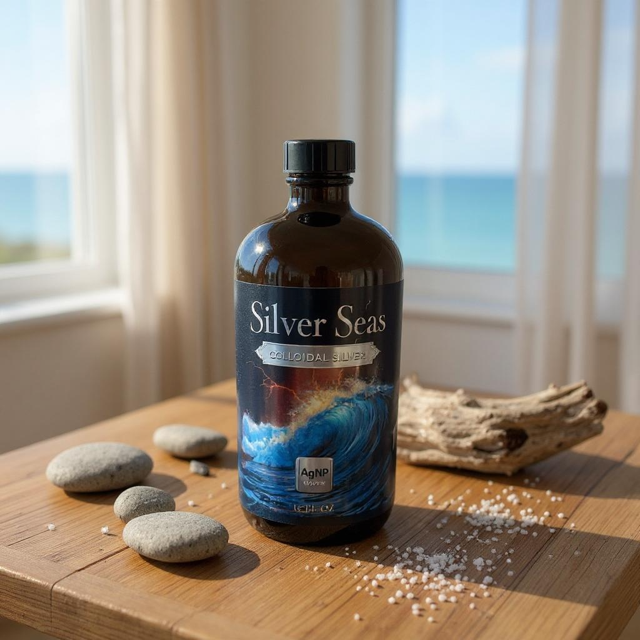About
Colloidal Silver
Colloidal silver is both a remedy and a prevention of infections of any kind. Some researchers claim that having sufficient colloidal silver in the body is like having a second immune system.
This miraculous substance was in common use until 1938, when antibiotics came into fashion and were suddenly touted by the huge multi-billion dollar pharmaceutical companies as "miracle drugs that would wipe out infectious disease forever."
Unfortunately, it works so well, the medical bureaucracy (such as the American Medical Association and the Food & Drug Association), acting hand-in-hand with the major global pharmaceutical conglomerates - are pushing hard to have it re-classified as a prescription medication, or else banned outright from public use.
The reason? Apparently, people are abandoning their traditional doctors in droves in a vast stampede away from prescription antibiotics, and toward the use of safe, effective colloidal silver.
People love the fact that colloidal silver is totally non-toxic under proper use, and according to many knowledgeable sources it kills more pathogenic micro-organisms than antibiotics ever could.
The Disease-Fighting
Power of Silver
Silver is a powerful, natural antibiotic/prophylactic, used for thousands of years with virtually no side effects whatsoever. In its electrically generated colloidal form, it acts as a catalyst, disabling the enzyme that all one-celled bacteria, viruses and fungi depend upon for their oxygen metabolism. In essence, upon contact with colloidal silver the harmful microorganisms that cause infectious disease actually suffocate.
The Difference
There is a lot of confusion surrounding the topic of Colloidal Silver, particularly with the labeling. Not all Colloidal Silver is equal. There are two types of Colloidal Silver: Ionic Colloidal Silver and “TRUE” Colloidal Silver. Let’s discuss the difference.
“TRUE” Colloidal Silver refers to a suspension of tiny silver particles (typically 1 to 100 nanometers) in a liquid, usually water. These particles, often referred to as silver nanoparticles (AgNP), exhibit unique properties that differ from bulk silver due to their size and large surface area. Ionic silver, on the other hand, consists of individual silver atoms or molecules (Ag+) that carry a positive charge and are dissolved in a liquid, rather than suspended as particles.
While both forms of silver have been explored for their potential benefits, particularly in antimicrobial applications, some arguments suggest that nanoparticle colloidal silver can offer advantages over ionic silver solutions.
Some research suggests that silver nanoparticles exhibit higher antibacterial activity compared to silver ions, potentially due to their ability to physically interact with and penetrate bacterial cell membranes, and to enter the intracellular space where they can inhibit critical processes. The larger surface area of nanoparticles compared to bulk silver, or even small silver ions, allows for more effective interaction with microbial cells.
“TRUE” Colloidal Silver, particularly Silver Seas high-quality products, maintains its stability over time and does not easily settle or aggregate. This is partly due to the electrical charges on the particles which keep them suspended in the liquid. Ionic silver, on the other hand, can be sensitive to light and electromagnetic fields, potentially affecting its stability and efficacy over time.
FACTS
ABOUT
Colloidal Silver
toxic to cancer cells
fights intestinal bacteria
reduces inflammation
disrupts bacteria biofilm
antiparasitic properties
kills bacteria ON CONTACT
kills fungus ON CONTACT
kills viruses ON CONTACT



